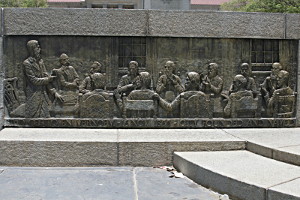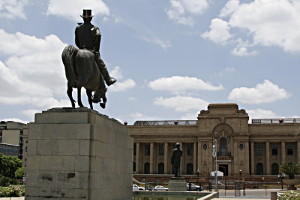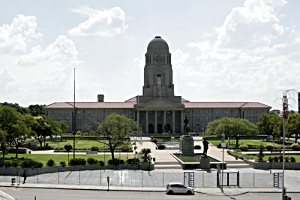Pretoria City Hall and Pretorius Square: A Blend of History and Architecture
Pretoria, a flourishing urban centre in South Africa, is marked with historical resonance and architectural brilliance. At its heart, stands the Pretoria City Hall and Pretorius Square that echoes the tales of a town growing into its own identity.
The drive to build a grand edifice as the city hall for an expanding Pretoria took shape in 1926 when the idea for an architectural competition was proposed. The competition sought designs for a hall that would reflect both the burgeoning aspirations of Pretoria and its profound cultural roots. Joseph Lockwood Hall, in collaboration with F.G. McIntosh, emerged as the victors of this contest. Their proposed design was a testament to the potential Pretoria held.
However, the actual commencement of the city hall’s construction didn't start immediately. It was in 1933, a good two years after Pretoria was declared a city, that the foundation stone was laid. And by 1935, the city boasted of a city hall that was a marvel in the Semi-Italian classical style. The hall's design was not only architecturally notable but also rich with contributions. One of the most remarkable gestures was by George Heys, the erstwhile owner of the iconic Melrose House, who donated the 32 tower bells that resonate through the hall even today.
As grand as the City Hall is, Pretorius Square complements it with its lush greenery, dancing fountains, and an ambience that speaks of tranquillity amidst urban rush. Strategically positioned right in front of the City Hall, the square is not just a visual treat but a historical canvas.
Gracing the square are three statues, each narrating a tale of Pretoria’s inception and growth:
- Marthinus Wessel Pretorius: As the founder of Pretoria, his contribution goes beyond mere administrative efforts. In 1855, he named the city as a tribute to his father, embedding familial pride in the very name of the city.
- Andries Pretorius: His statue stands tall, reminiscent of his leadership among the Voortrekkers who embarked on the ambitious journey northwards. It was in his honour that the city found its name, marking the trails and travails of those who ventured to make Pretoria their home.
- Chief Tshwane: While the city is named after the Pretorius lineage, the Tshwane Metropolitan Municipality - which encompasses Pretoria - owes its name to Chief Tshwane. This local chieftain is a representation of the indigenous history and the tales that have shaped the region.
In conclusion, the Pretoria City Hall and Pretorius Square stand not just as symbols of architectural and urban beauty, but also as storytellers. They beckon visitors and locals alike to delve deeper, to understand the tales of a city that grew from humble beginnings to a metropolis, echoing stories of ambition, honour, and heritage.



